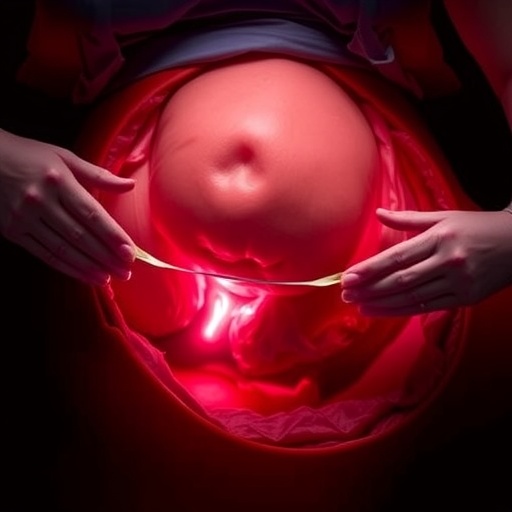Parkinson’s Disease: A Revolutionary Biomarker Discovery Poised to Transform Early Diagnosis and Treatment
Parkinson’s disease, a relentless neurodegenerative disorder, has long challenged scientists and clinicians due to its complex pathology and elusive early diagnosis. Traditionally identified by motor symptoms such as tremors, rigidity, and bradykinesia, diagnosis often occurs after substantial neuronal loss, primarily within dopaminergic systems in the brain. This delay critically limits therapeutic intervention, as the disease has already inflicted irreversible damage by the time it is clinically recognized. However, a groundbreaking discovery by researchers at the PRODI Center for Protein Diagnostics at Ruhr University Bochum, in collaboration with the biotech firm betaSENSE, heralds a new era for Parkinson’s diagnostics. Their identification of a sensitive biomarker based on misfolded alpha-synuclein protein in cerebrospinal fluid presents an unprecedented opportunity for early and reliable detection.
The misfolding and aggregation of alpha-synuclein (αSyn) is central to Parkinson’s pathogenesis. Under normal conditions, αSyn predominantly adopts α-helical conformations that maintain its functional roles in synaptic vesicle regulation. However, pathological progression involves a conformational shift to β-sheet-rich structures, a hallmark implicated in the formation of toxic oligomers and fibrillar aggregates. These misfolded αSyn species coalesce into Lewy bodies—distinctive cytoplasmic inclusions observed in the brains of Parkinson’s patients. Professor Klaus Gerwert, leading the study as founding and managing director at PRODI and CEO of betaSENSE, emphasizes that the transition from α-helices to β-sheet structures imbues the protein with a propensity to form sticky complexes, driving neurodegeneration.
Employing the patented immuno-infrared sensor (iRS) technology, the research team analyzed cerebrospinal fluid samples from two independent clinical cohorts totaling 134 participants. These included patients monitored at Parkinson’s centers in Bochum and Kassel. The iRS technology exploits the unique infrared absorption signatures of protein secondary structures, allowing precise quantification of αSyn conformational states in bodily fluids without extensive sample preparation. Strikingly, the team reported sensitivity and specificity metrics exceeding 90%, underscoring the robustness of αSyn misfolding as a fluid biomarker for Parkinson’s disease.
This achievement builds upon betaSENSE’s prior success in Alzheimer’s disease biomarker development. Their earlier work demonstrated that misfolding of amyloid-beta (Aβ) proteins, detectable years before symptom onset, could predict Alzheimer’s risk with remarkable precision. Translating this sophisticated biophysical detection platform to monitor αSyn misfolding represents a significant leap, facilitating not only diagnosis but potentially illuminating disease progression and therapeutic efficacy in real time. Klaus Gerwert highlights that the fluency of this approach may revolutionize diagnostic paradigms across a spectrum of neurodegenerative diseases.
The iRS platform’s non-invasive, highly sensitive nature addresses longstanding challenges in neurodegenerative disease biomarkers, traditionally hampered by low reproducibility and ambiguity. Unlike conventional immunoassays, which often struggle to distinguish conformational variants, the infrared-based sensor directly interrogates protein secondary structure changes. This technological innovation bypasses confounding factors and enhances diagnostic certainty. It also allows longitudinal assessment, enabling clinicians to track subtle biochemical shifts over time, a critical advantage in chronic disorders like Parkinson’s.
Moreover, the accessibility of cerebrospinal fluid sampling and the standardization of iRS measurements promise integration into clinical workflows. With refined protocols, the test could complement existing clinical evaluations, providing a decisive biomarker that informs early diagnosis, differential diagnosis from related movement disorders, and stratification of patients for clinical trials. Such stratification is crucial given Parkinson’s heterogeneity, which complicates therapeutic trials and hinders regulatory approval of disease-modifying agents.
Beyond diagnosis, the implications for drug development are profound. Disease-modifying therapeutics targeting αSyn aggregation pathways have been a principal focus in the Parkinson’s research community. The iRS biomarker affords a reliable pharmacodynamic endpoint, enabling researchers to quantify shifts in αSyn misfolding states in response to candidate treatments. This feedback loop accelerates drug development by providing early indicators of efficacy and facilitating precision medicine approaches tailored to patient-specific molecular profiles.
Professor Gerwert’s interdisciplinary team, combining expertise in protein biophysics, neurobiology, and clinical neurology, exemplifies the cutting-edge collaboration driving this discovery. Their joint efforts with Parkinson’s centers ensure that clinical samples accurately represent patient populations and disease stages, lending high translational value to the findings. This synergy exemplifies the convergence of fundamental science and applied technology poised to transform neurodegenerative disease landscapes.
Critically, early diagnosis enabled by this biomarker has ramifications extending beyond individual patients. Parkinson’s disease imposes a staggering socio-economic burden due to progressive disability and associated comorbidities. Identifying patients before irreversible neuronal loss could revolutionize treatment windows, enabling interventions that preserve function and improve quality of life. Public health strategies may also benefit by prioritizing early screening and resource allocation based on biochemical evidence rather than symptomatic presentation alone.
Subject of Research: Biomarker development for early diagnosis and progression monitoring of Parkinson’s disease based on alpha-synuclein misfolding.
Article Title: Alpha-synuclein Misfolding as Fluid Biomarker for Parkinson’s Disease Measured with the iRS Platform
News Publication Date: 25-Apr-2025
Web References:
EMBO Molecular Medicine article
DOI link
Image Credits: RUB, Marquard
Keywords: Parkinson’s disease, biomarker, alpha-synuclein, protein misfolding, cerebrospinal fluid, immuno-infrared sensor, iRS technology, neurodegeneration, Lewy bodies, early diagnosis, therapeutic monitoring, protein aggregation
Tags: alpha-synuclein pathogenesisbetaSENSE biotech collaborationcerebrospinal fluid analysisearly diagnosis of Parkinson’s DiseaseLewy bodies and Parkinson’smisfolded alpha-synuclein proteinneurodegenerative disorder researchParkinson’s Disease biomarker discoveryPRODI Center for Protein Diagnosticsprotein misfolding in neurodegenerationRuhr University Bochum researchtherapeutic intervention for Parkinson’s





